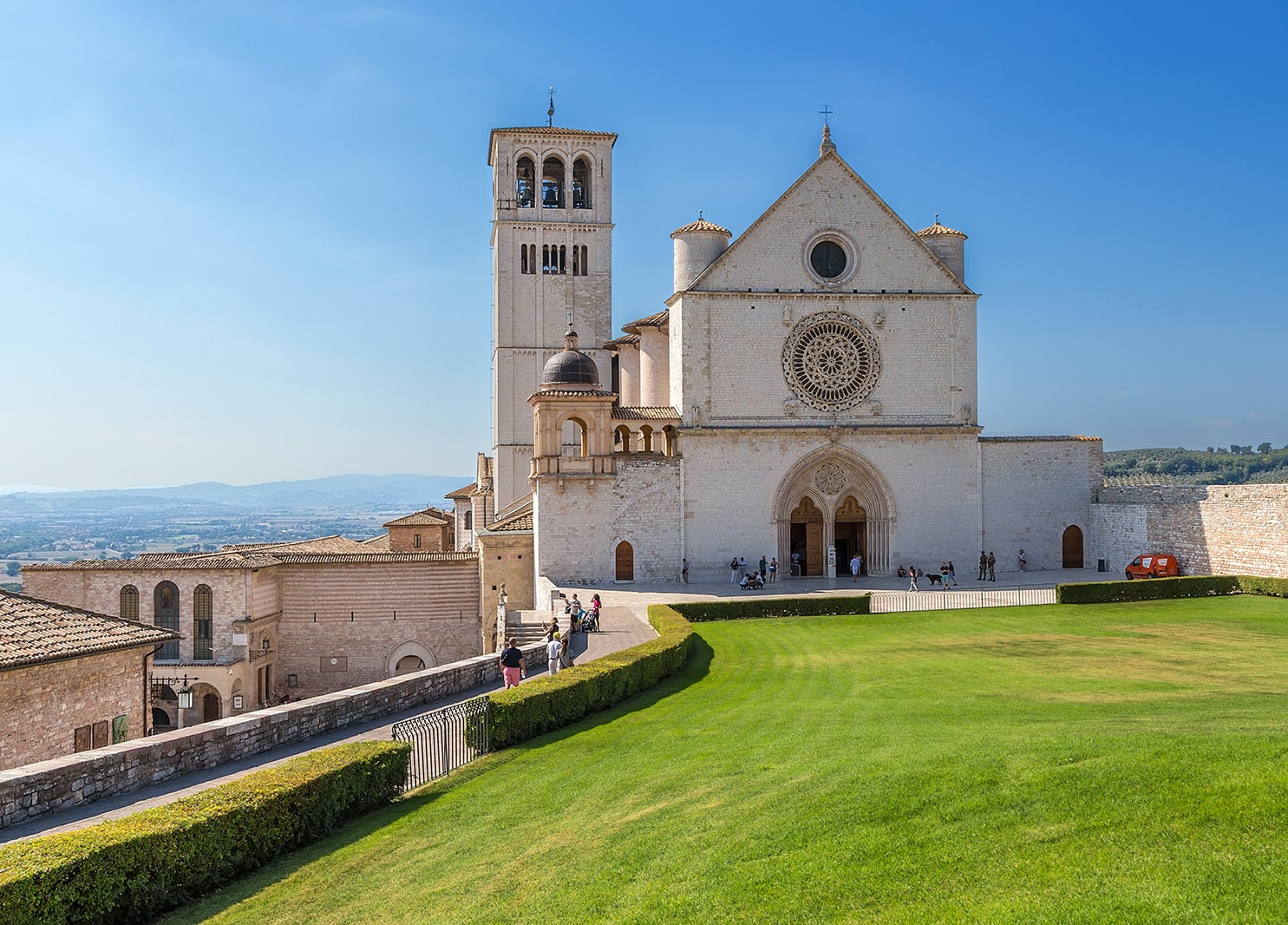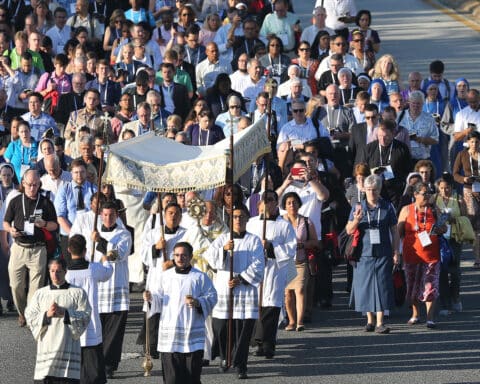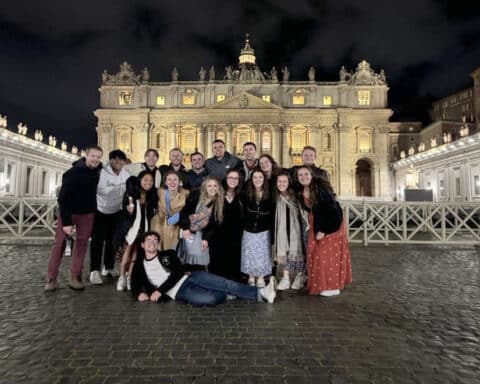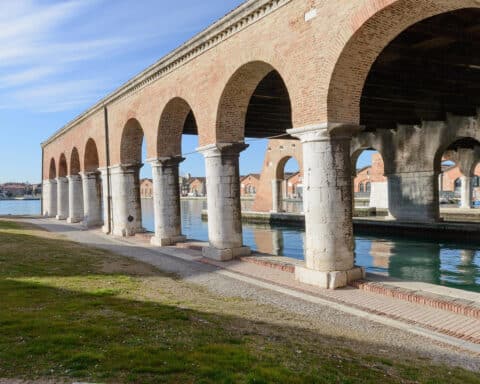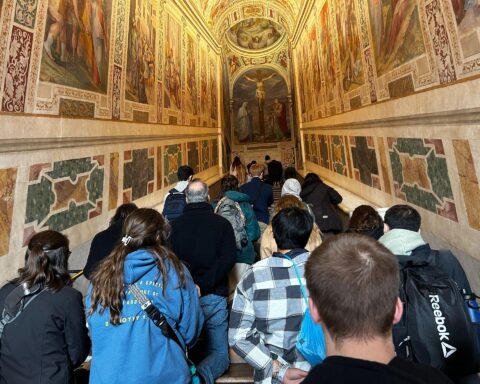Fourteen meetings in six days may be a very efficient way to use one’s time, but it is perhaps not the best way to enjoy Italy. Landing in Rome on Saturday afternoon, I had my first meeting that evening, and they continued by ones or twos or fours through Thursday of the following week.
Our single meeting on Wednesday was in Assisi. A little over two hours from Rome by car, Assisi, of course, has always been on my Catholic bucket list, but somehow I had never made it to the home of St. Francis and St. Clare and Blessed Carlo Acutis until we had an appointment with the bishop of Assisi to discuss a book he has written.
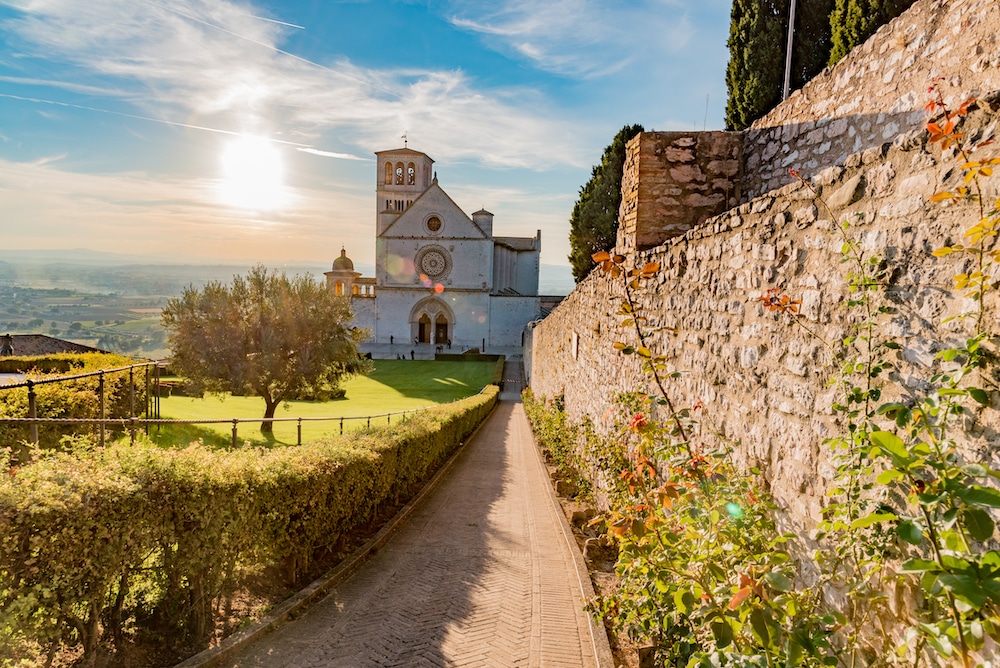
A small, energetic and jovial man, Archbishop Domenico Sorrentino greeted us with a twinkle in his eye, a broad smile on his face, and genuine delight that an American Catholic publisher might be interested in what he had to say about the life and work of the only economist ever to be beatified. (A few years ago, I would have said that tells us all we need to know about economists, but I am older and wiser now.)
The Portal of Renunciation
Even more importantly, Archbishop Sorrentino wanted us to see the doorway through which St. Francis was dragged or pushed by his father, when, having had enough of his son’s radical rhetoric, he brought him to the episcopal palace in a last desperate attempt to get Francis to embrace his station in life. There, on the other side of the Portal of Renunciation — only recently rediscovered through the archeological efforts of Archbishop Sorrentino — Francis stripped himself of the rich clothes of his father and was wrapped in the bishop’s own robes, embraced by the Church as he, in turn, embraced a life of radical poverty in service to Christ and his Gospel.
There’s something in the very nature of Italian hill towns that seems designed to create saints.
… The very reality of having to walk uphill both ways as one goes about one’s daily life in Assisi slows not only the body but the mind.
God writes straight with crooked lines, the Portuguese proverb says, subtly reminding us of the way in which he, and he alone, can take our sins and failings and turn them to the good. But the line from St. Francis to Blessed Carlo Acutis is straight and strong (as Archbishop Sorrentino has demonstrated in another book), and walking the streets of Assisi, one can see why. There’s something in the very nature of Italian hill towns that seems designed to create saints.
Climbing toward heaven
If, to the average American, life in Rome seems slower and sweeter than the day-to-day grind back in the States, the very reality of having to walk uphill both ways as one goes about one’s daily life in Assisi slows not only the body but the mind. As the constant buzz of modern life recedes into the distance, replaced by the rhythmic breathing of lungs not used to the climb, the still, small voice of God can reemerge in a silence punctuated only by the sound of one’s slow footfalls.
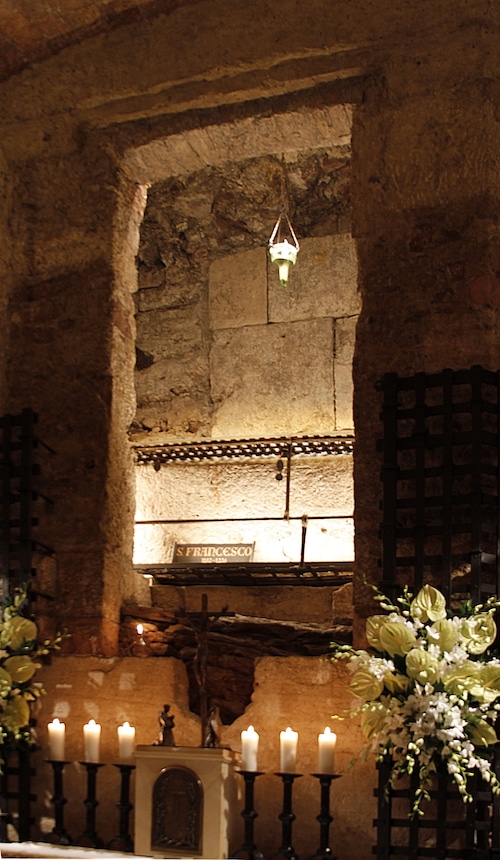
Descending to the crypt in the Basilica di San Francesco d’Assisi and spending some time in prayer before the tomb of the saint before ascending into the upper church impresses upon the body as much as on the soul that our life on this earth, like his, will one day end, and the final disposition of our soul will depend not only on God’s mercy then but on our efforts here and now to rise from the depths and climb toward heaven. The holy sacrifice of the Mass, re-presented each day directly over the tomb of St. Francis, reminds us that St. Francis had so united his very being to that sacrifice that the wounds of Christ appeared in his own body. We may not personally bear the stigmata, but every Christian is called to enter into the mystery of Christ’s death and resurrection in such a way that we die to self and rise again with him into a life that transcends our own.
Tomorrow, there are more meetings in Rome, and some time to visit a few of my favorite churches. But this evening, as Assisi fades into the distance, I am already hoping to return here one day, to walk these streets slowly once again and to remind my soul and my body what it means to be a pilgrim in this life.

